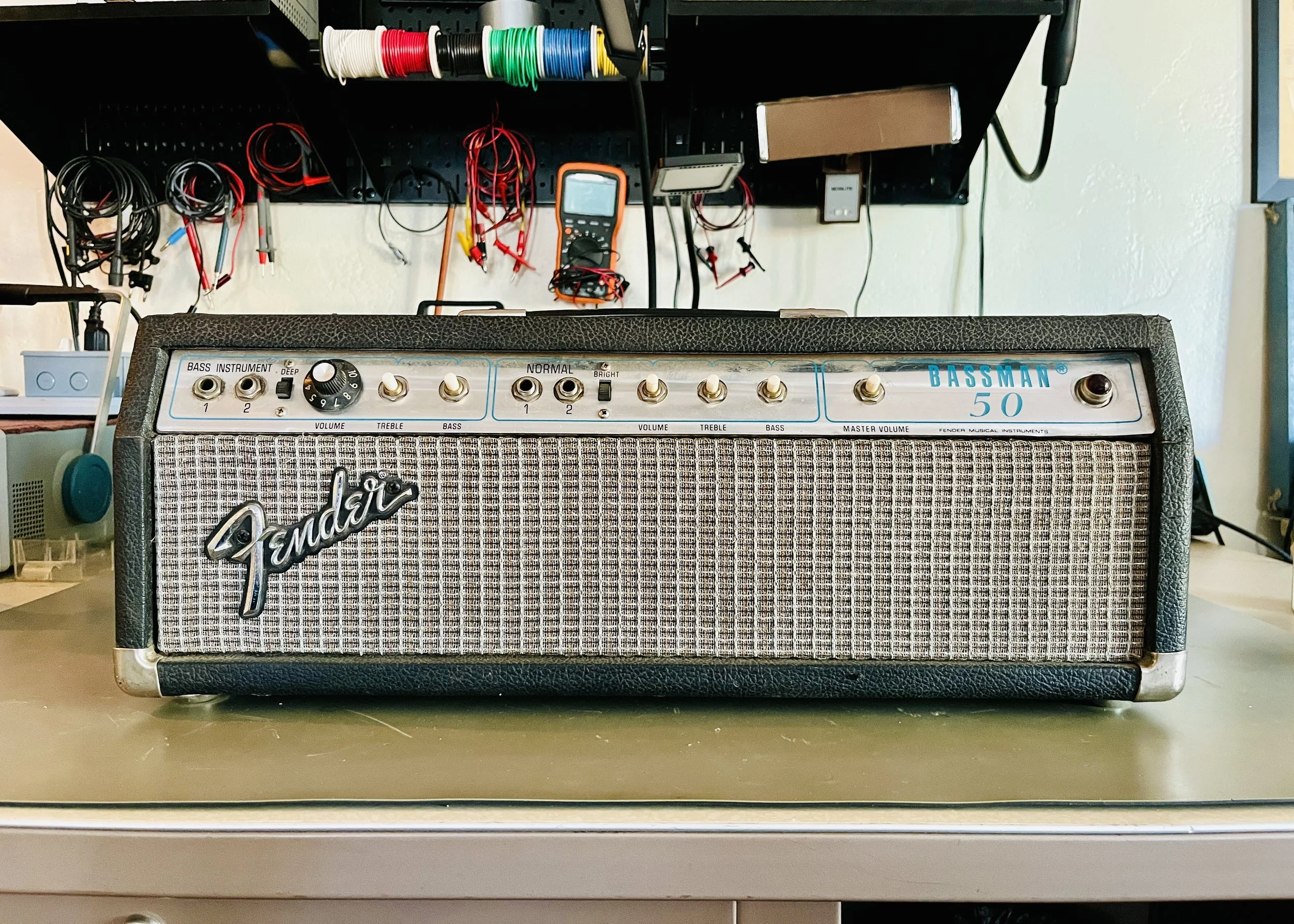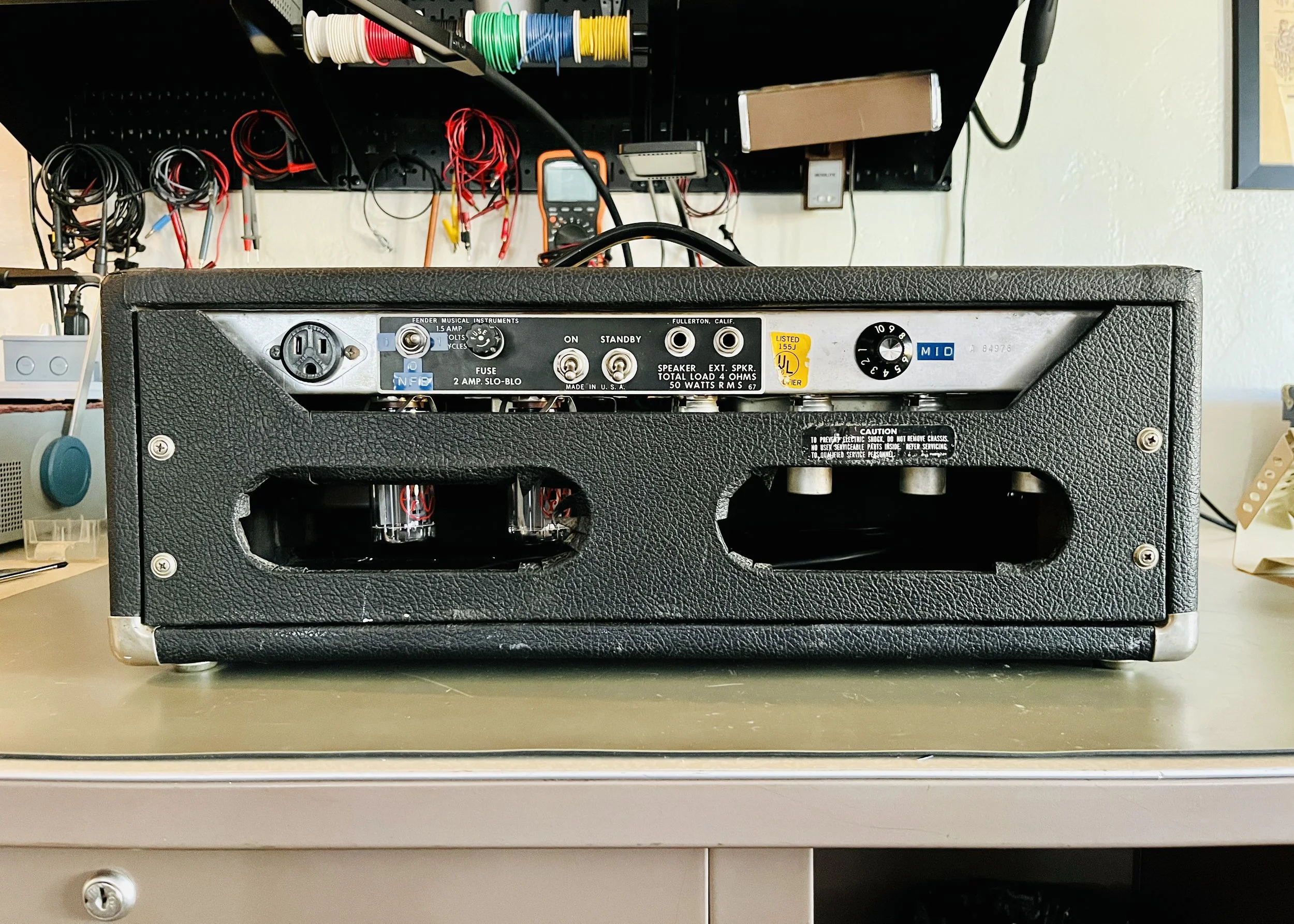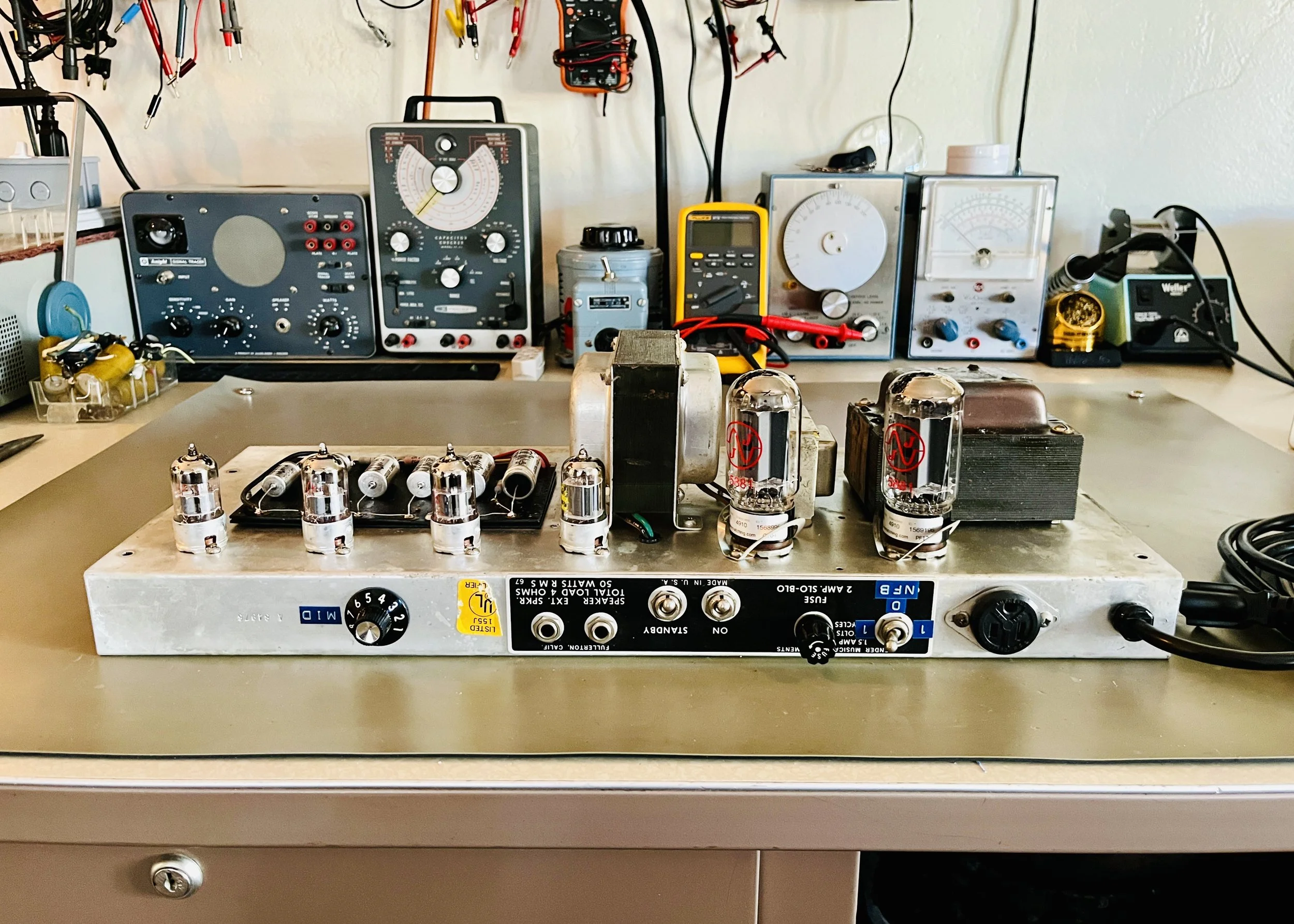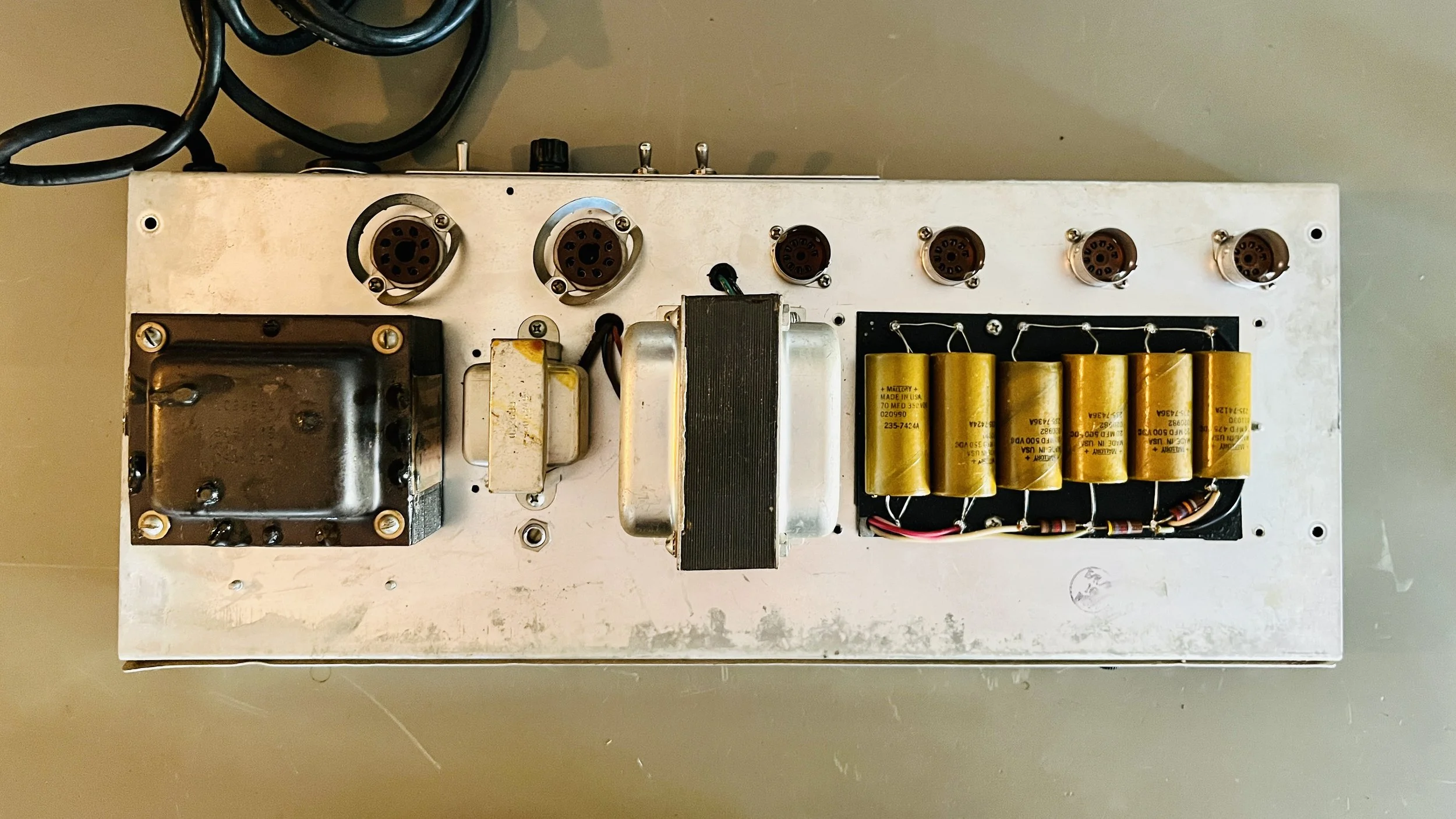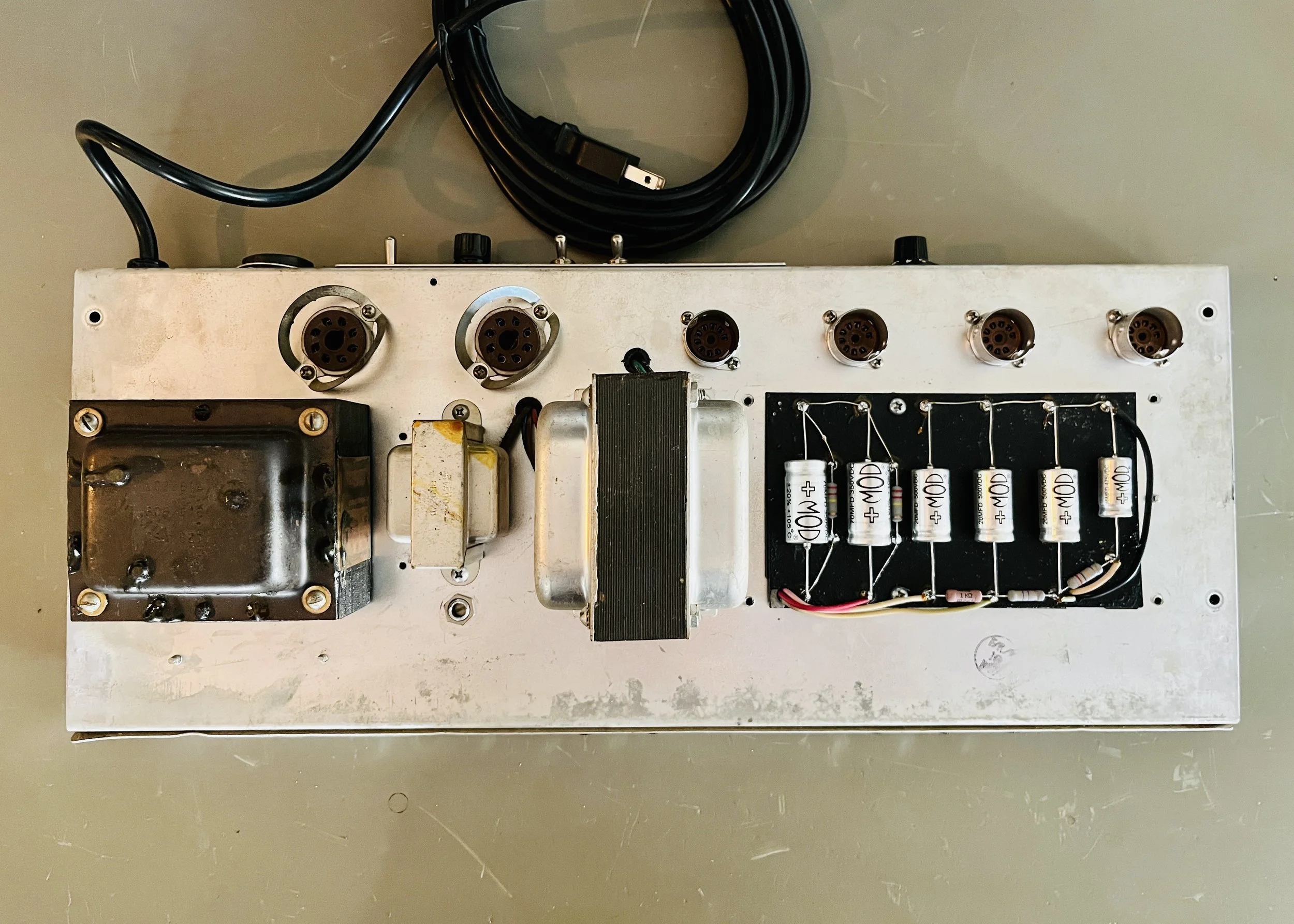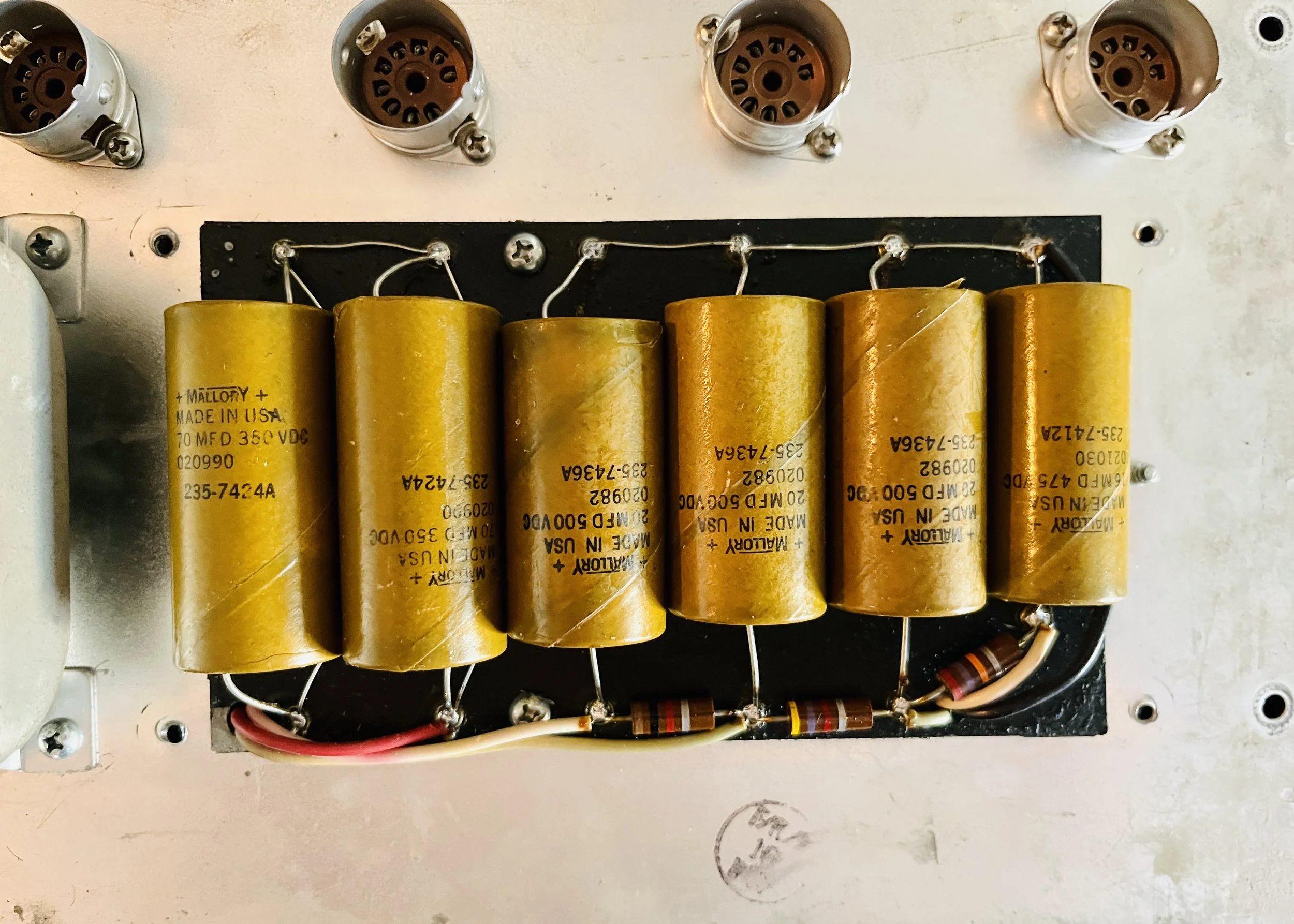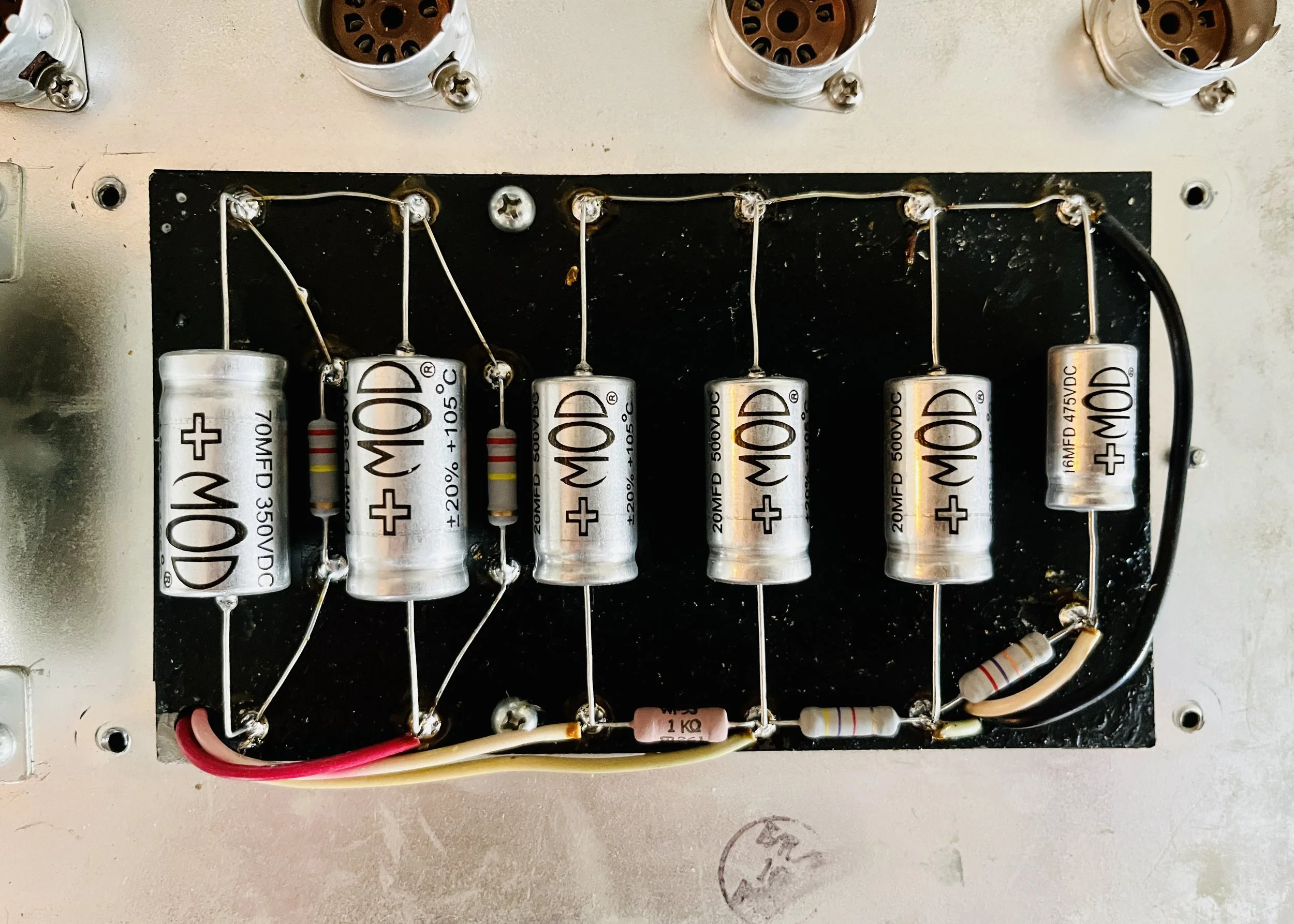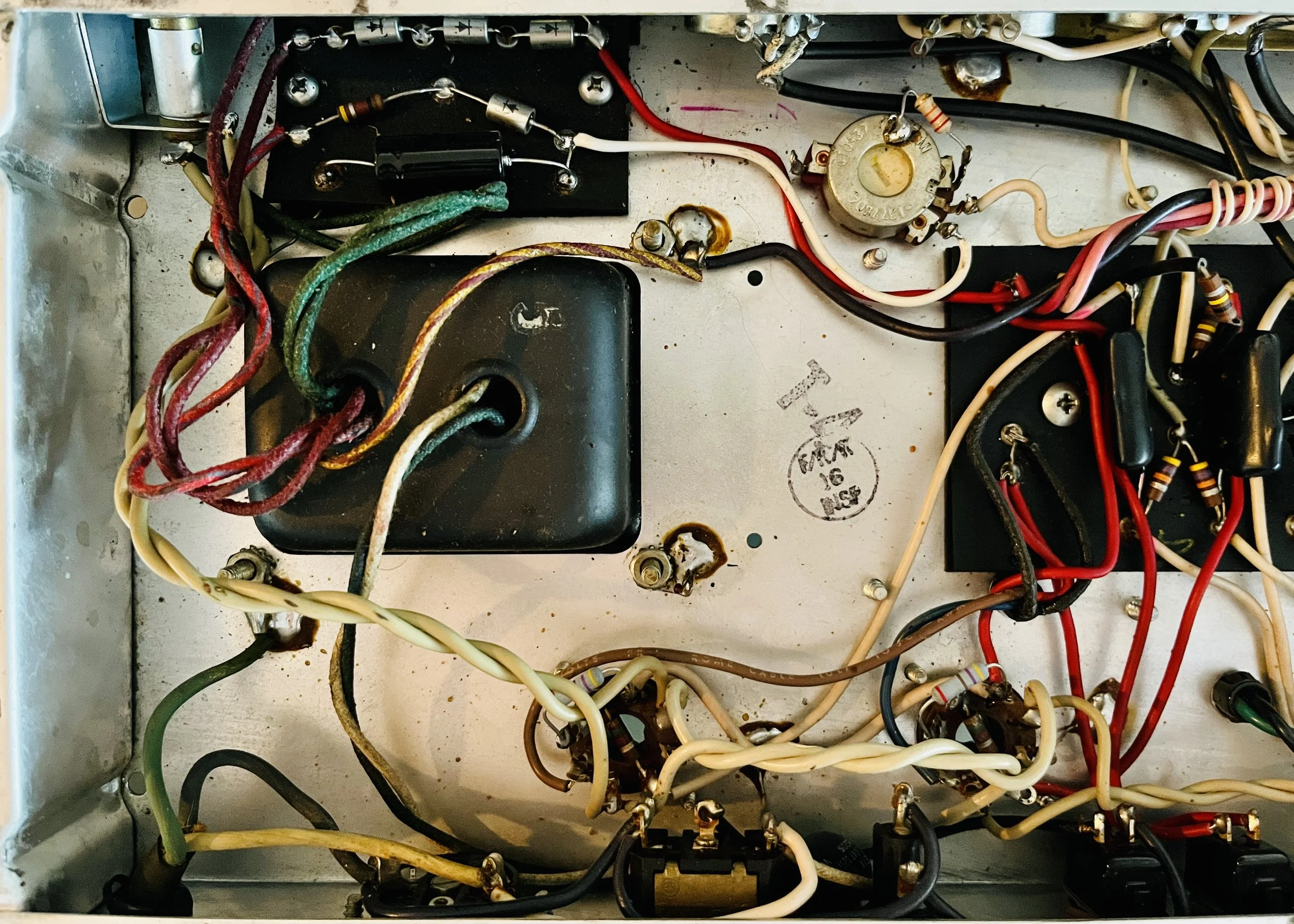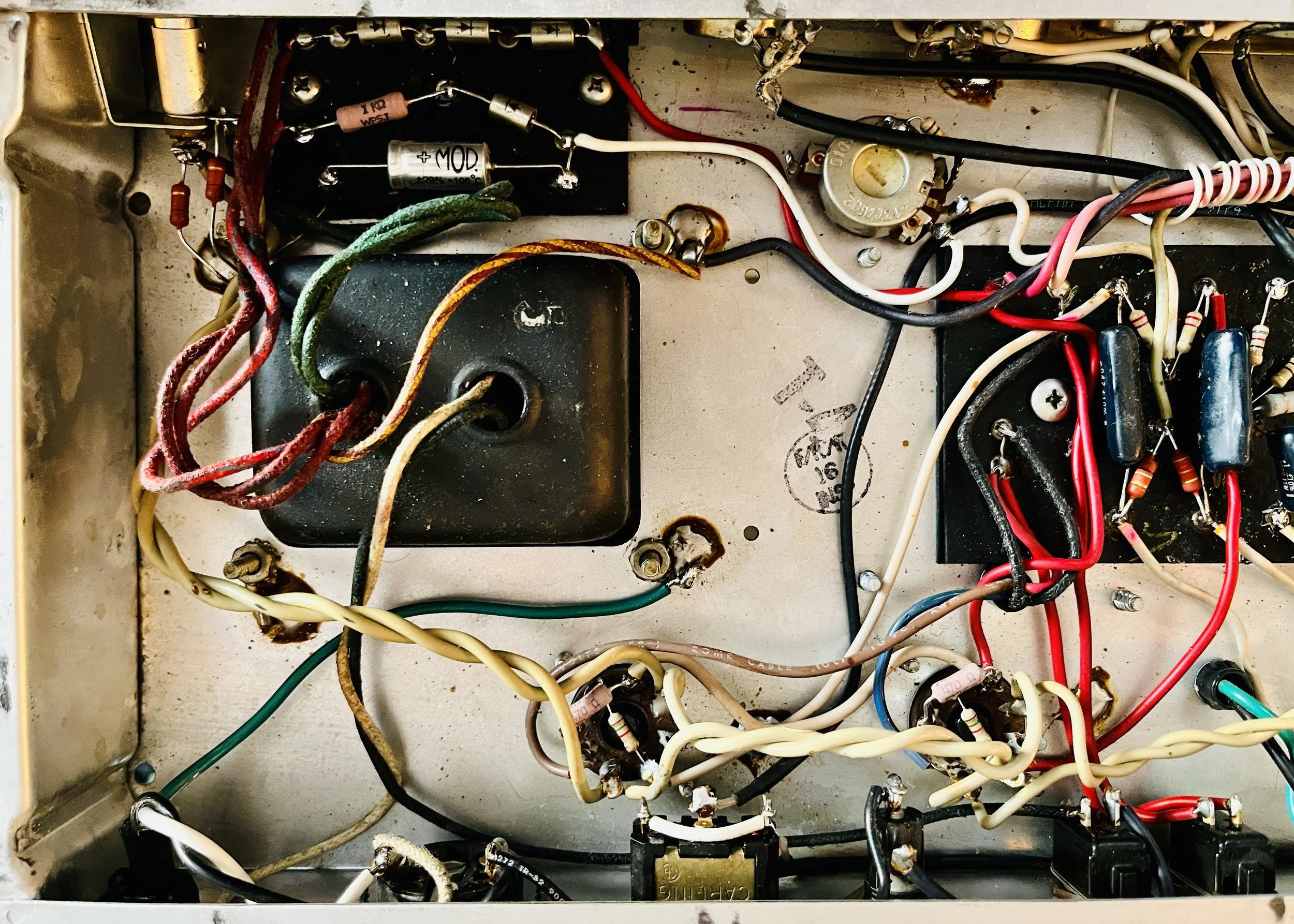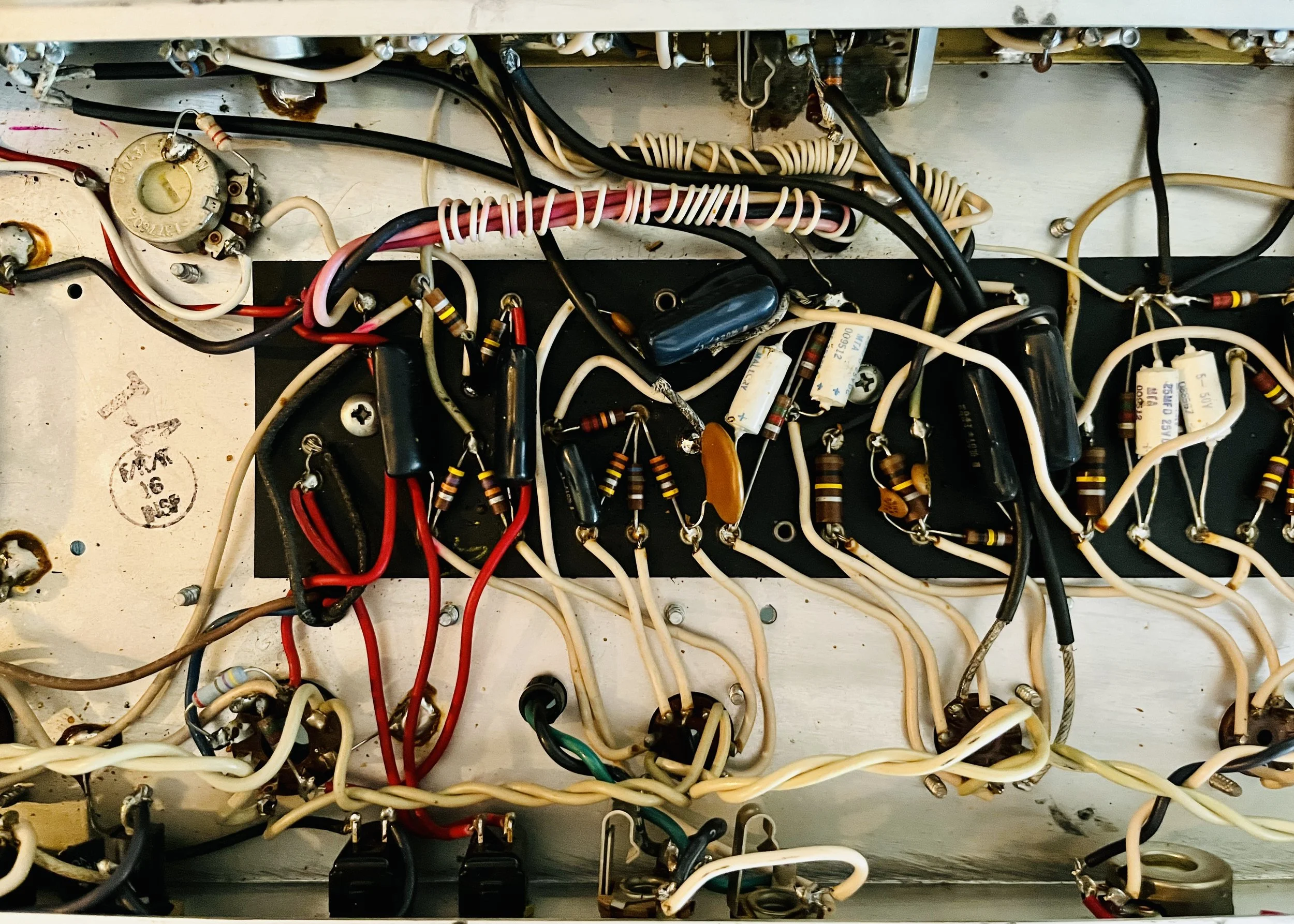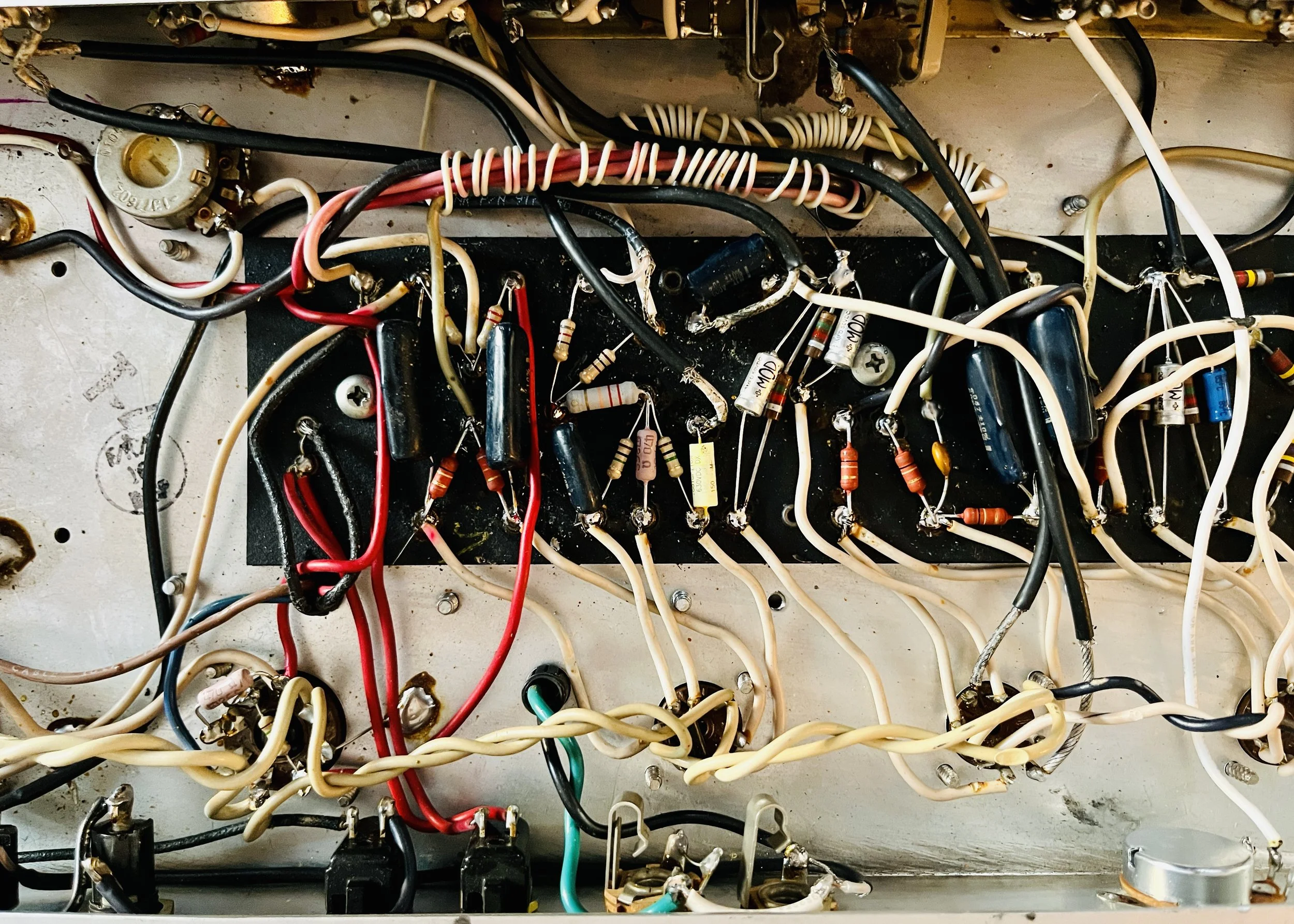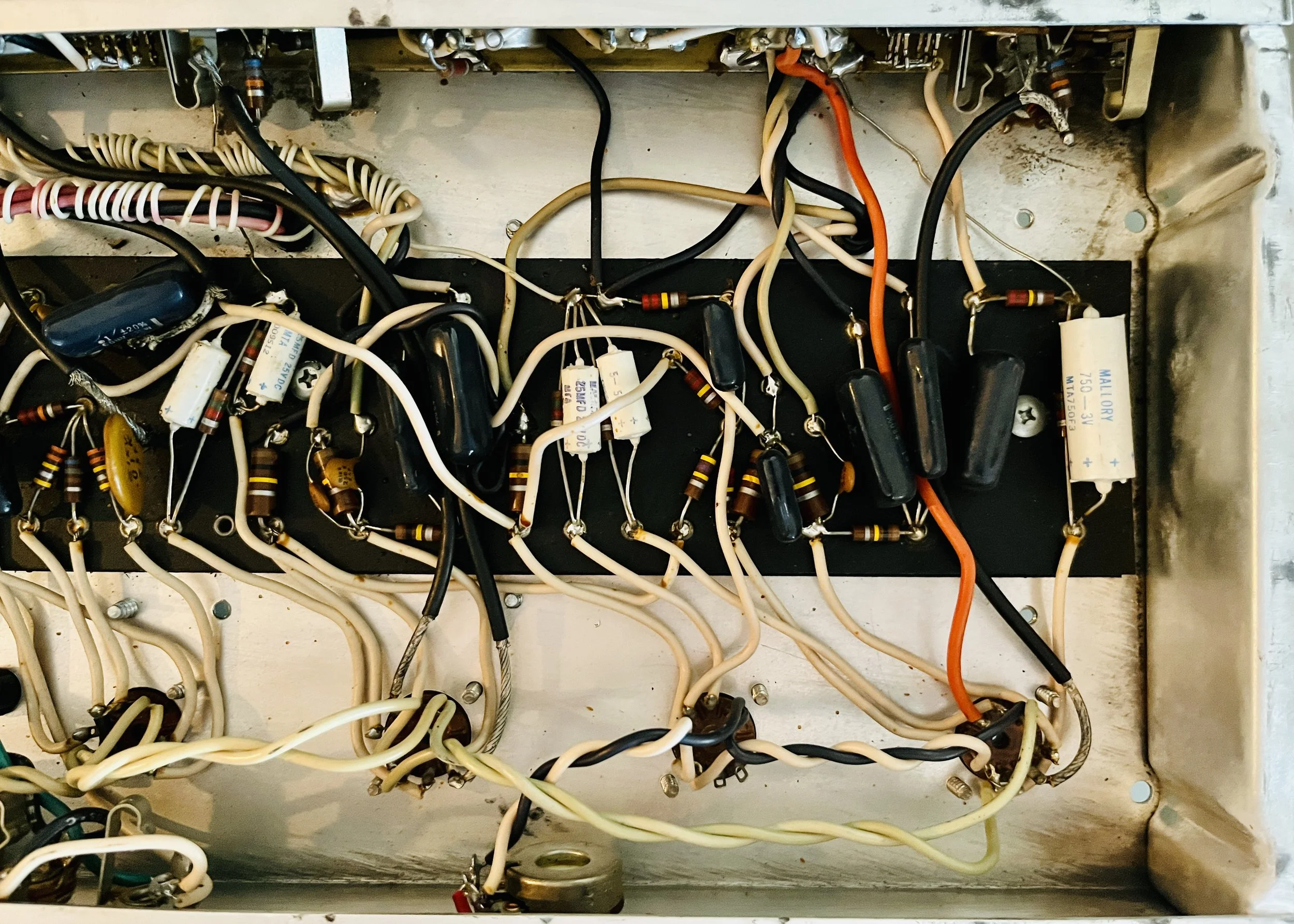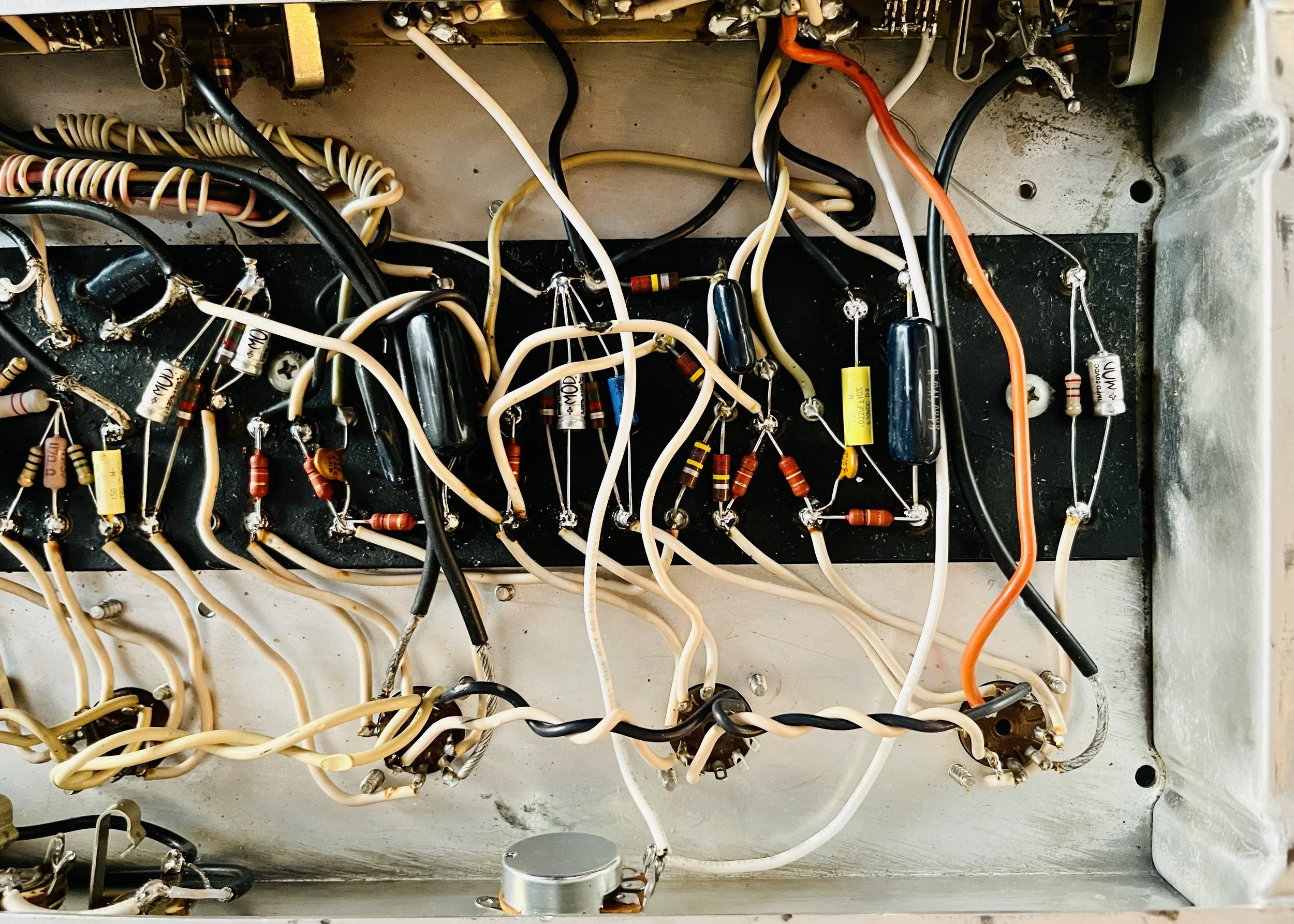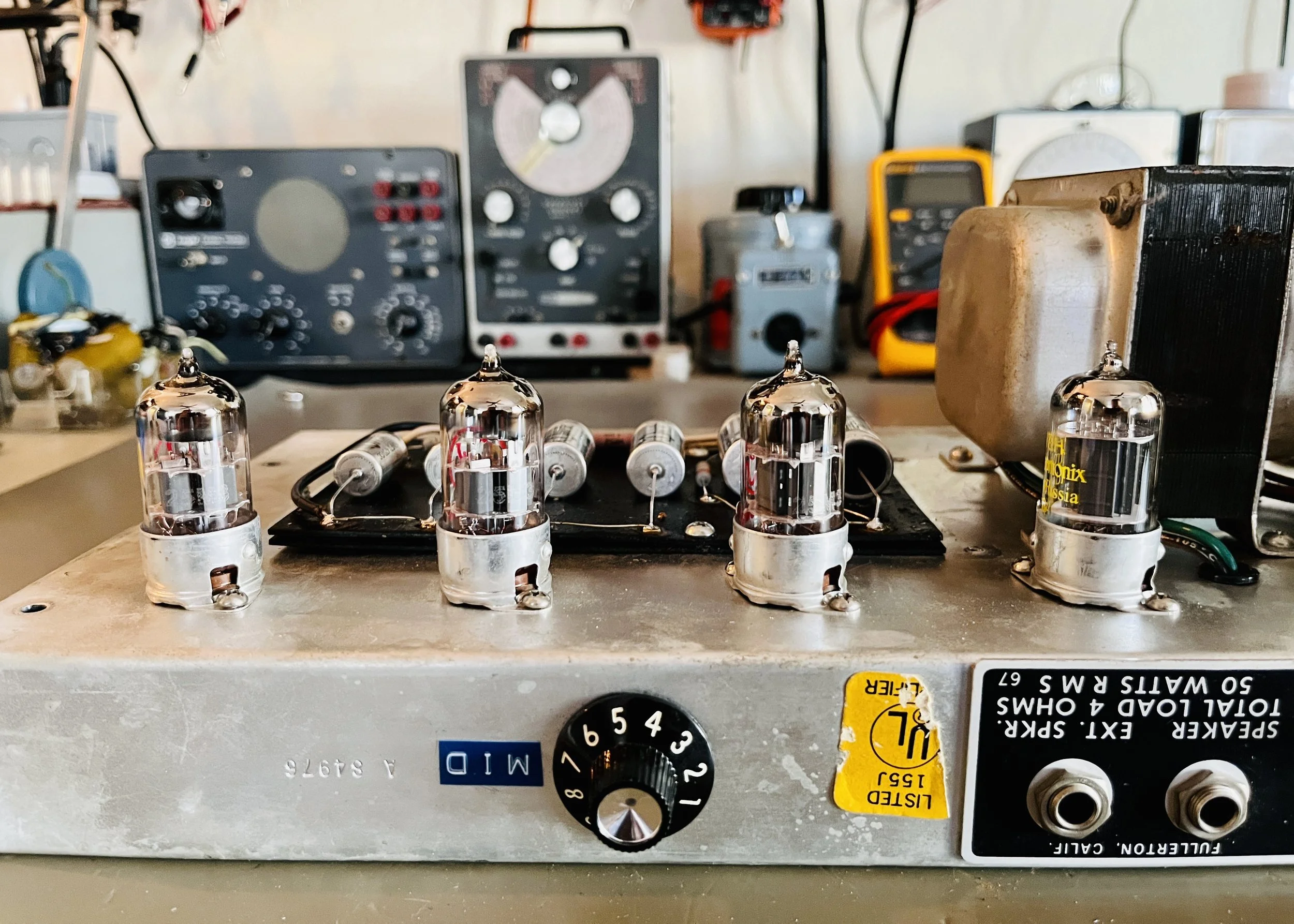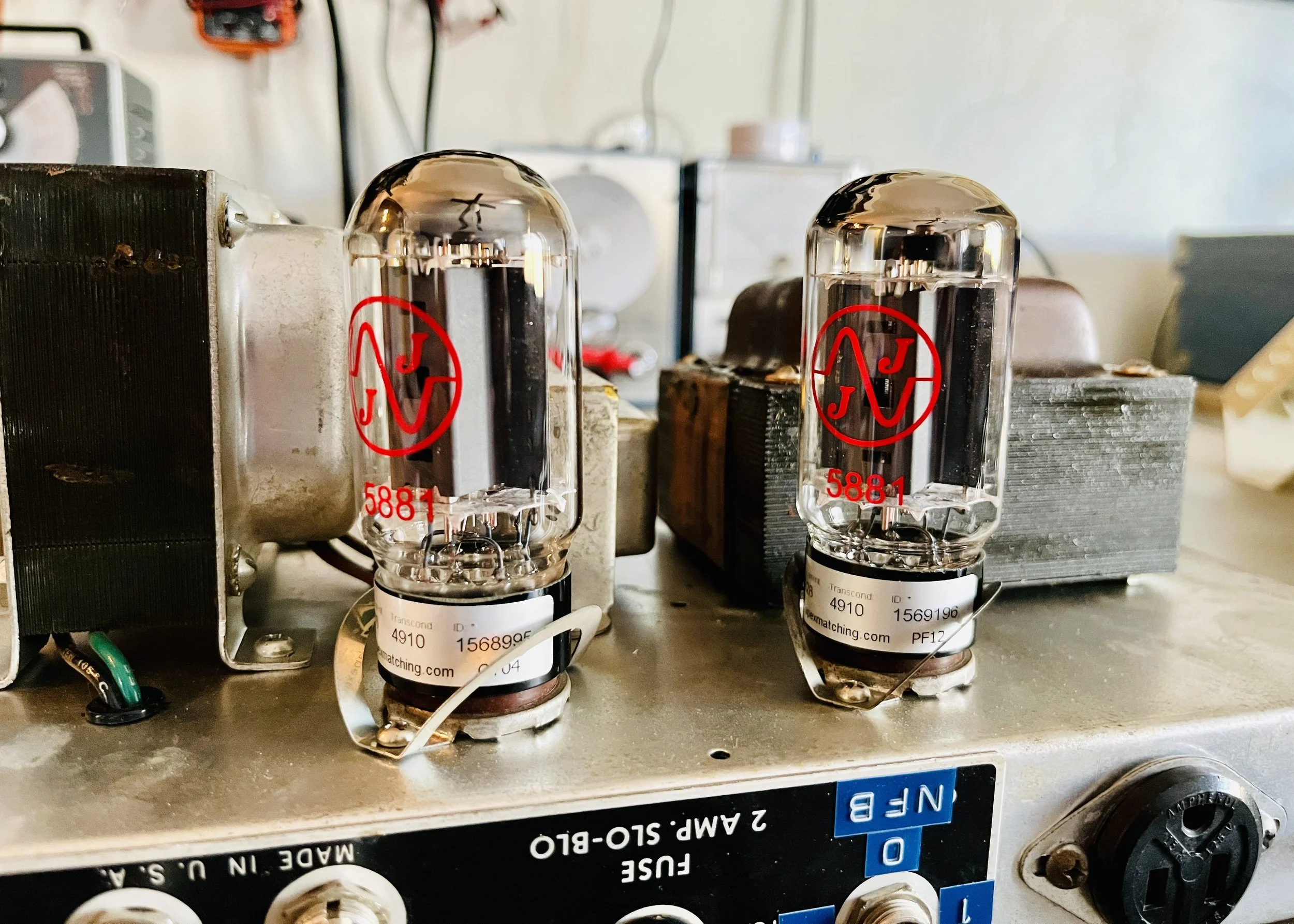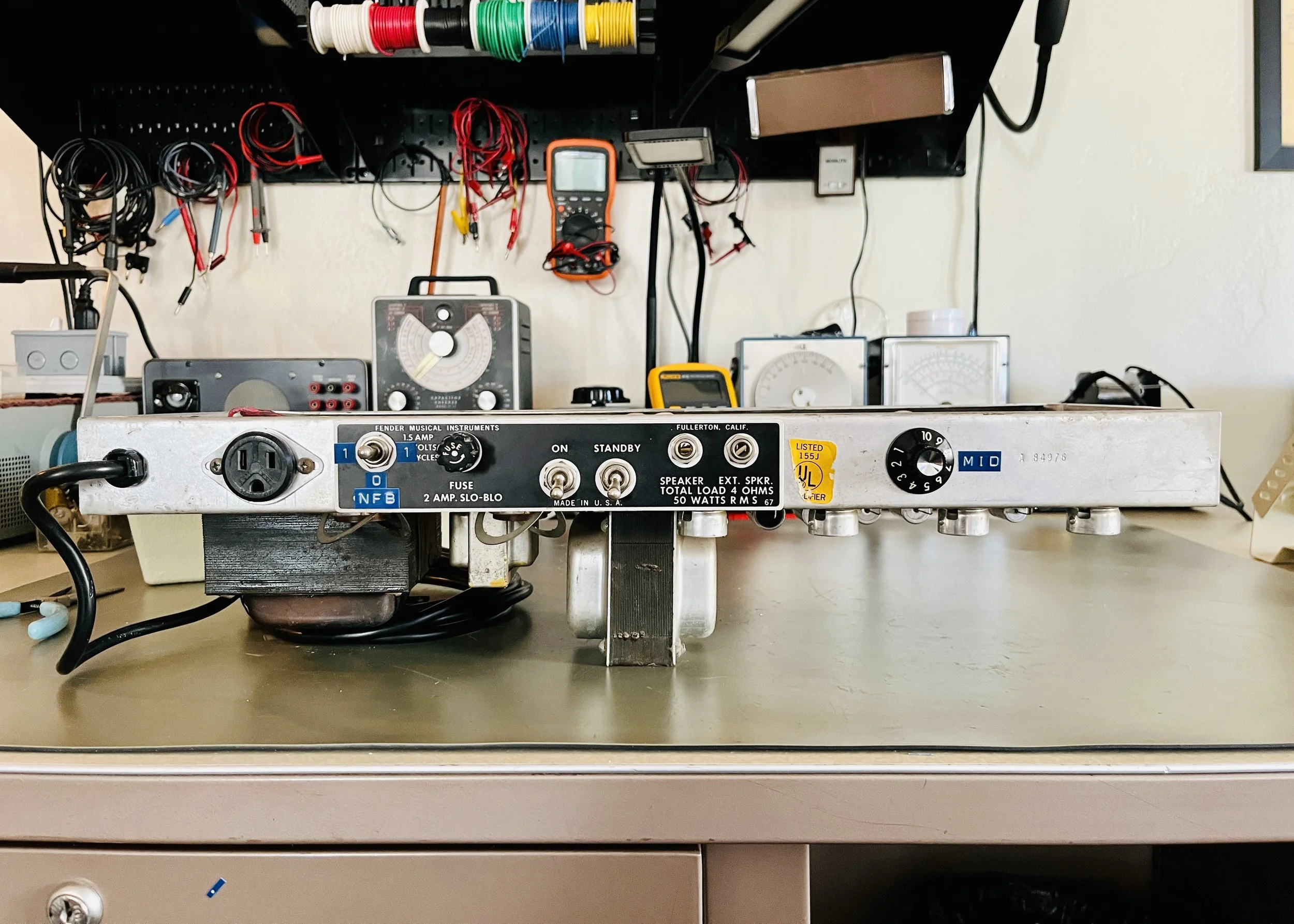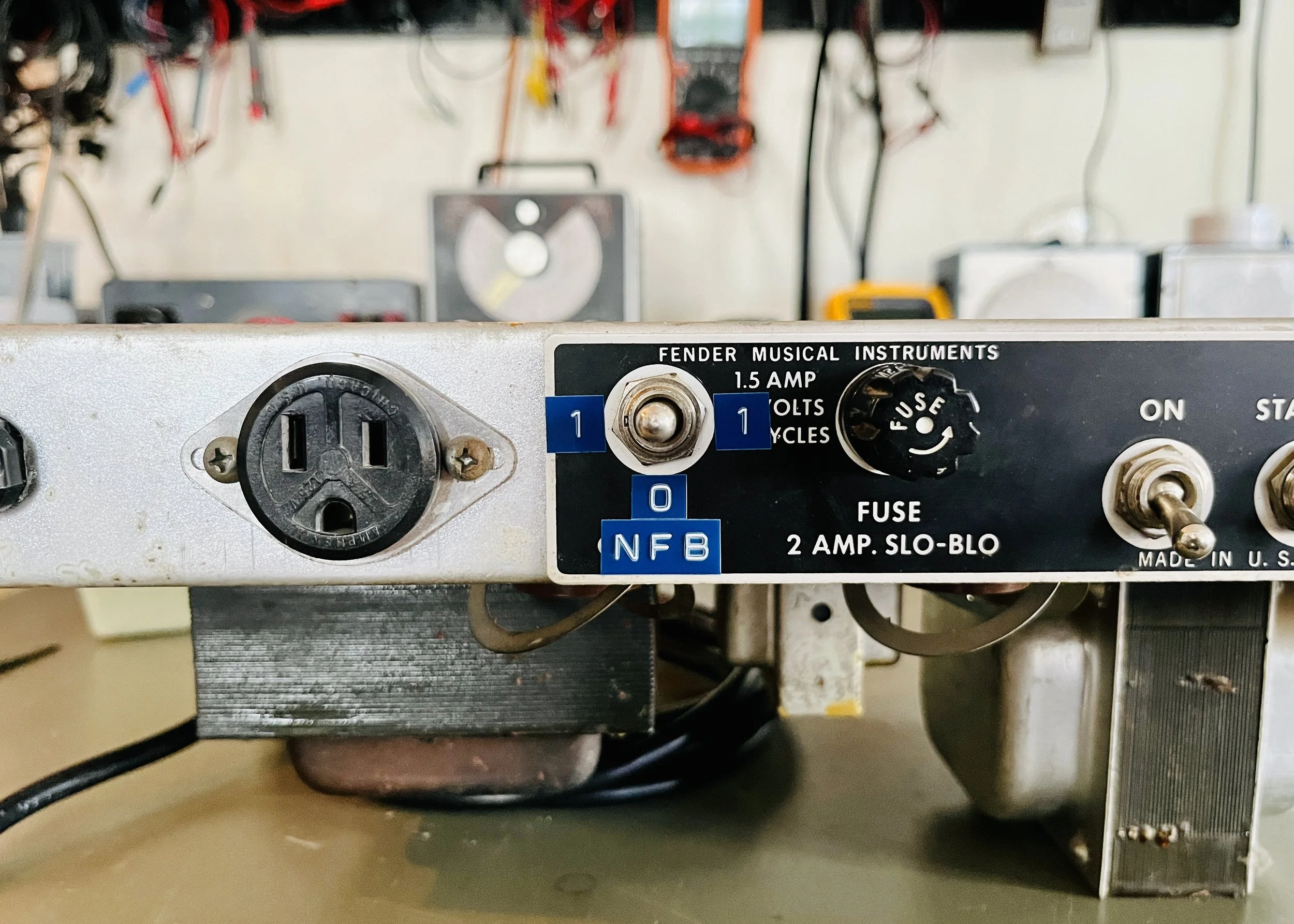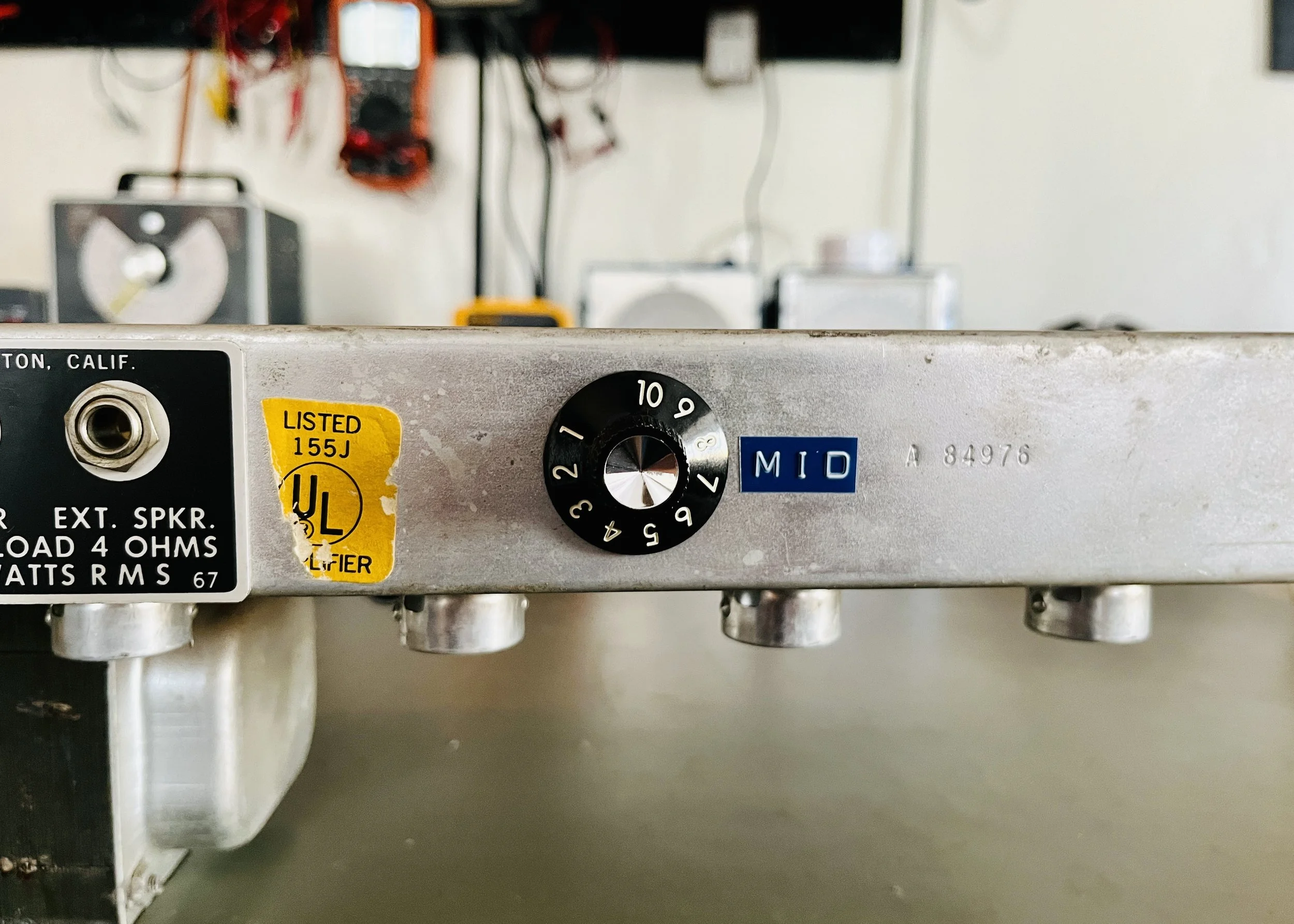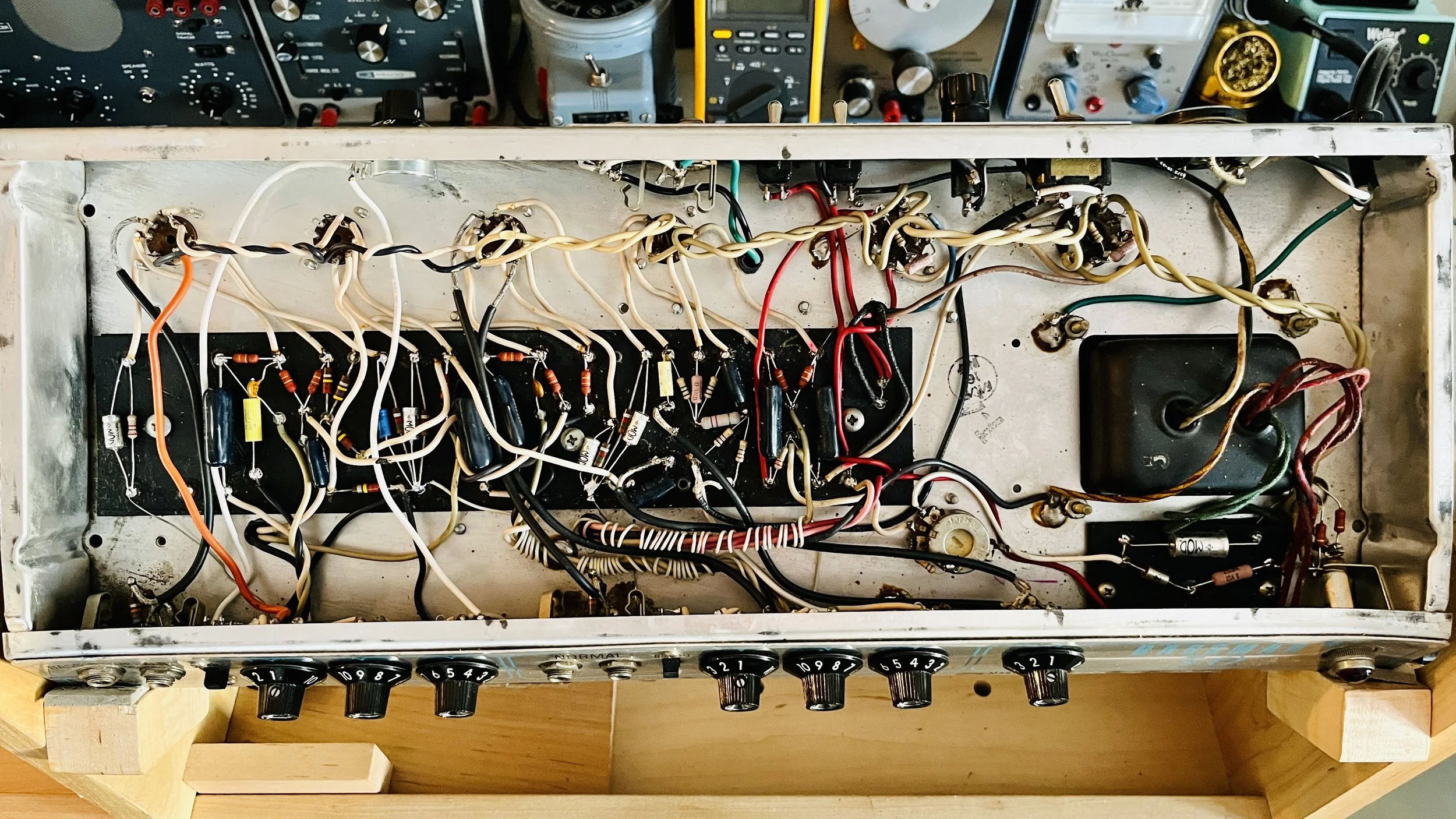1975 Fender Bassman 50
The Fender Bassman was one of the very first designs that CBS put their hands on after their buyout of Leo Fender’s company in 1968. There are a lot of different schematic designs for the Bassman, maybe more so than any other Fender model. This is the Bassman 50 - a mid-70’s design that was meant to be much cleaner and hi-fi sounding compared to previous models. It features a 50 watt output transformer and a pre phase inverter master volume. Fender made a lot of undesirable changes to the Bassman circuit by the time they got to the Bassman 50 (too numerous to list) and as such this model is known for it’s rather anemic tones for guitar or bass. These amps are fantastic platforms for modding though, and with some effort and hard work these can be taken back to 1960’s Black-Panel spec. Once completed these are great hand-wired Fender amps that can have all the tone of the earlier models and last a lifetime of every-night gigging.
The customer that owns this amp is from Nogales, Mexico and plays in both Punk and Rock bands - he wanted this amp to be turned into something more useful to those genres, and for the amp to sound like the 60’s Bassman amps that are so well loved in the Punk Rock community. We decided to make this amp a combination of the best parts of the two most revered and collected Bassman circuits, the 1960’s Black-Panel AA864 and the AB165. While we kept the “Normal” channel and power amp traditional 60’s Fender spec, the “Bass Instrument” channel (which no one ever uses for bass guitar) was turned into a Tweed inspired “Lead” channel that is actually useful, especially for medium gain rock sounds. In order to do the conversion to earlier circuit revisions a good deal of redesign and parts layout planning has to be considered because of how different the 70’s layout is from the 60’s versions.
This amp came into the shop in mostly original condition with the exception of the bias cap, bias adjustment circuit, and the screen resistors, which were replaced many years ago. It was in fairly rough shape and needed a full restoration including a cap job, new power/screen/plate resistors, new tubes + biasing, AC cord, and cleaning - along with the AA864/AB165 conversion and 3 custom modifications.
Amp was completely restored and modded to mix of AA864 and AB165 Black-Panel specs. All filter/bias/bypass caps were replaced with upgraded voltage and temperature rated MOD/Vishay brand electrolytics. New 2 Watt Metal Oxide/5 Watt Cement power dropping resistors were installed for better reliability and lower noise floor. All plate resistors were replaced with 2 Watt Reduced Mass Metal Film type units for preventative maintenance and reliability. The cathode resistors for V4 were replaced with 2 Watt Metal Oxide/3 Watt Cement type units for preventative maintenance - these resistors are common failure points in most Fender designs due to being under-rated in wattage. All screen resistors were replaced with 3 Watt Cement 470 ohm type units for same reasoning. 1/2 Watt Carbon Film resistors were installed for the bias, NFB, preamp, and power amp circuits to complete the modifications as necessary. Two Mallory 150 brand film capacitors were used to mod phase inverter coupling position and Bass Instrument tone stack. All resistor and capacitor values were chosen to make amp compliant with AA864/AB165 values. A new 3AG Fuse was installed as the one present was the wrong value. A new 3 Prong AC cord was installed to replace the worn out original.
The ground switch was deactivated for safety and that switch was used for a mod that allows the Negative Feedback Circuit to be disconnected for a more aggressive Tweed tone or placed at it's original factory value. The switch is either On (1) or Off (0). A few mods were done to the "Bass Instrument" channel to make into a Tweed inspired "Lead" channel that is more versatile for Punk Rock/Rock music with increased gain and mid frequency punch. A "Mid" pot and knob were added where the original "Hum Balance" pot was, this allows the "Bass Instrument" channel to have a user select-able amount of mids just like most Fender amplifiers. The V1A plate and cathode resistors as well as the cathode bypass cap were all modded to provide more gain and a tighter sounding overdrive. The mid frequency cap in the tone stack was changed to Super Reverb/Concert value in order to shift the mids up in frequency and reduce the mid scoop. Lastly the "Deep" switch was changed into a "Raw" switch - this disconnects the tone stack providing a huge jump in overdrive and a raw woolly tone not unlike a Tweed Bassman. The Tweed Bassman sound is emphasized even more when combined with the NFB loop switch in the off (0) position. The Treble/Bass/Mid knobs do not function with the "Deep" switch in the up/on position. The "Normal" channel is an exact 1960's AA864 Black-Panel preamp which gives very traditional Fender tones with the modded power amp.
The original tubes did not test good and all were replaced. This was the final tube lineup: V1-V2 = JJ 12AX7S, V3 = JJ 12AX7MG, V4 = EHX 12AT7, V5-V6 = JJ 5881 Matched Pair. These tubes were picked for best tone, reliability, and to bring on earlier power tube distortion. The 5881's Fixed Bias was set to %66 Class AB Plate Dissipation with a B+ of 467VDC. The tube sockets were all treated with De-Oxit to remove/prevent corrosion. The pots were sprayed out and the amp was cleaned inside and out. All new Fender style dial knobs were put on as the original knobs were all missing. Amp sounds great, with two distinct channels each suited for either clean (Normal) or dirty (Bass Instrument) guitar tones. A basic A/B pedal could be used to switch between the two for rhythm and lead sounds.


